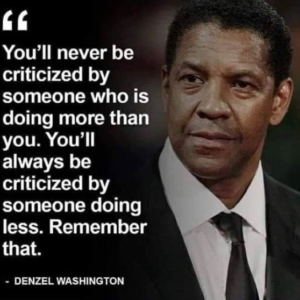Several factors can influence why some older adults choose to keep up with fashion and grooming, while others may not prioritize these things as much.
Like everything, there is a broad range of standards and limits when it comes to fashion and grooming and no two people are the same. Here are some of the factors that influence their fashion choices:
 Personal Preferences: Individual preferences play a significant role in fashion choices. Some older adults have a lifelong interest in fashion and continue to enjoy expressing themselves through clothing and footwear as they age. Others may have never been particularly interested in fashion or may prioritize comfort and practicality over style.
Personal Preferences: Individual preferences play a significant role in fashion choices. Some older adults have a lifelong interest in fashion and continue to enjoy expressing themselves through clothing and footwear as they age. Others may have never been particularly interested in fashion or may prioritize comfort and practicality over style.
Cultural and Societal Norms: Cultural and societal norms can influence attitudes towards fashion and aging. In some cultures, there may be expectations or pressure to dress a certain way as people age, while in others, there may be more freedom to express personal style regardless of age.
Financial constraints can impact an individual’s ability to keep up with fashion trends. Some older adults may have limited resources for purchasing new clothing or footwear, leading them to prioritize essentials over fashion-forward items.
Health and Mobility: Physical health and mobility limitations can affect clothing choices. Older adults with mobility issues or chronic conditions may prioritize clothing that is comfortable, easy to put on, and accommodates any special needs, rather than following fashion trends.
Self-image and Confidence: Self-image and confidence play a role in fashion choices. Some older adults may feel confident in their personal style and enjoy experimenting with new trends, while others may feel less comfortable or self-conscious about their appearance, leading them to stick to familiar or conservative clothing styles.
Social Influences: Social influences, such as peer groups, family members, or media representation, can impact fashion choices. Older adults who are surrounded by friends or family members who prioritize fashion may be more likely to do so themselves, while those who do not have as much exposure to fashion trends may be less inclined to keep up with them.
Life Transitions: Life transitions, such as retirement, moving to a new community, or becoming a grandparent, can influence fashion and grooming choices among other things. Some older adults may use these transitions as an opportunity to update their wardrobe and try new styles, while others may feel more comfortable sticking to familiar clothing choices.
Personal Values: Personal values and beliefs can influence fashion preferences. Some older adults may prioritize sustainability, ethical production, or simplicity in their clothing choices, while others may value self-expression and creativity through fashion.
Generally speaking, fashion choices in older adults are influenced by a combination of personal preferences, cultural norms, financial considerations, health factors, and social influences. While some older adults may embrace fashion trends and enjoy experimenting with new styles, others may prioritize comfort, practicality, or personal expression in their clothing and footwear choices.
More on Fashion and Grooming
 Before we get to grooming, let’s address the phenomenon of wearing dirty or stained clothing, which can have several negative consequences for older adults, both physically and socially.
Before we get to grooming, let’s address the phenomenon of wearing dirty or stained clothing, which can have several negative consequences for older adults, both physically and socially.
Here are some reasons why we should discontinue this practice…
Dirty clothing can harbor bacteria, germs, and allergens, which can lead to skin irritation, infections, or exacerbate existing health conditions. Maintaining good hygiene by wearing clean clothing helps prevent illness and promotes overall well-being.
Remember, wearing dirty clothes is like inviting a germ party on your skin! You don’t want those little critters setting up camp and causing chaos. Keep it clean, folks!
Stained or soiled clothing can cause friction and irritation against the skin, leading to rashes, chafing, or discomfort. Older adults may be more susceptible to skin issues due to thinning skin and reduced skin elasticity, making it important to wear clean and comfortable clothing.
Nobody wants to feel like they’re wearing a scratchy, sandpaper suit all day. Stained clothing can turn your skin into a protest zone, complete with redness and irritation. Let’s keep the peace and stick to clean threads.
Dirty clothing can emit unpleasant odors, which can be off-putting to others and impact social interactions. Maintaining personal hygiene and wearing clean clothing helps prevent body odor and promotes a positive self-image.
If your clothes could talk, they’d be shouting, “Please wash me!” Nothing kills a conversation faster than a funky odor emanating from your outfit.
Keep it fresh, and you’ll be the life of the party!
Wearing dirty or stained clothing can create a negative impression on others and affect how older adults are perceived in social settings. It may lead to embarrassment, stigma, or social isolation, as others may avoid interacting with someone who appears unkempt or neglectful of personal hygiene.
You know that saying, “Dress to impress”? Well, wearing stained clothes might leave people thinking you’re auditioning for a role as a human art project. Let’s avoid the abstract and stick to the classics!
Wearing clean and well-maintained clothing contributes to a sense of self-confidence and pride in one’s appearance. Feeling comfortable and presentable in clothing that is clean and free of stains can boost self-esteem and overall well-being.
Confidence is the best outfit, but even Superman would feel self-conscious in a dirty cape. So, suit up in clean clothes and conquer the day like the superhero you are!
For older adults who are still active in the workforce (and many are) or engage in professional settings, wearing clean and professional attire is essential for making a positive impression and projecting competence and professionalism.
Stained clothes in a professional setting? That’s like showing up to a job interview with a sandwich stuck to your tie. Keep it classy, and your career prospects will thank you!
Maintaining personal hygiene and wearing clean clothing demonstrates respect for oneself and others. It shows consideration for the comfort and well-being of those around you and promotes a positive and hygienic environment.
Think of wearing dirty clothes like subjecting your friends and family to a surprise game of “Guess That Stain.”
Let’s spare them the mystery and opt for clean attire instead.
Wearing clean and well-maintained clothing contributes to emotional well-being by promoting a sense of dignity, self-respect, and personal satisfaction. It allows older adults to feel comfortable and confident in their appearance, which can positively impact mood and mental health.
Life’s too short to wear stained clothes and feel like a walking laundry basket. Embrace the joy of clean attire and strut your stuff with confidence!
Older adults should prioritize wearing clean and well-maintained clothing as part of their daily self-care routine. It’s important for maintaining personal hygiene, promoting skin health, managing body odor, enhancing social interactions, boosting self-confidence, projecting professionalism, demonstrating respect for oneself and others, and supporting emotional well-being.
If you find yourself in front of someone who is guilty of wearing dirty/stained clothes and you want to discuss it…remember, a little laughter goes a long way, especially when it comes to tackling the serious topic of personal hygiene and clothing cleanliness!


 sacrificing style.
sacrificing style._01.jpg&ehk=B1PI2a%2bisZYPAdBITVZjzYNtzpmaAL4810EG8Na4JdU%3d&risl=&pid=ImgRaw&r=0)










